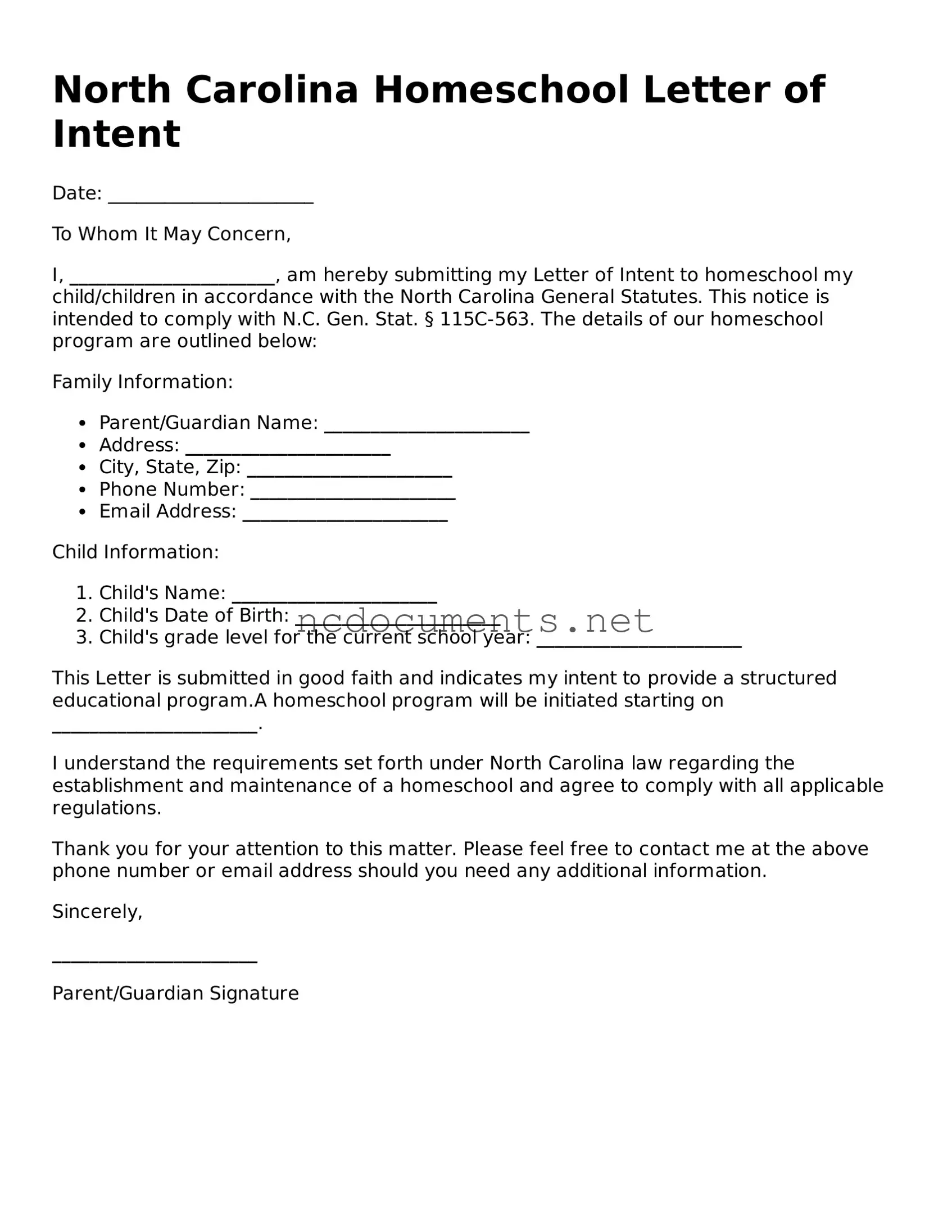The North Carolina Homeschool Letter of Intent is akin to the Notice of Intent to Homeschool form used in various states. This document serves as a formal notification to the state education department that a family intends to educate their children at home. Similar to North Carolina’s form, it often requires basic information about the student and the parent’s educational philosophy. The purpose is to establish a legal framework for homeschooling, ensuring that families comply with state regulations while providing educational opportunities outside traditional schools.
Another document that resembles the Homeschool Letter of Intent is the Home Education Registration Form found in states like Florida. This form also notifies the state of a family's decision to homeschool. It typically includes details such as the names and ages of the children, the educational curriculum planned, and the parent’s contact information. Both documents aim to keep the state informed about homeschooling activities and ensure that families adhere to educational standards.
The Declaration of Intent to Homeschool is a similar document used in states like Pennsylvania. This declaration must be submitted to the local school district, outlining the family's intent to educate their children at home. Like the North Carolina form, it requires essential information about the student and may include a proposed educational plan. This document ensures that parents are aware of their responsibilities and the legal requirements for homeschooling in their state.
In Texas, the Affidavit of Intent to Homeschool serves a similar purpose. While Texas does not require formal registration, this affidavit can be submitted to clarify a family's intent to homeschool. It often includes information about the child’s educational needs and the curriculum being used. The intent is to provide clarity and assurance to both the family and the local education authorities regarding the homeschooling process.
The Homeschool Notification Form in Ohio is another document that parallels the North Carolina form. Parents must file this form with their local school district to inform them of their decision to homeschool. It typically requests information about the educational plan and the qualifications of the parent to provide instruction. This ensures that the local education authority is aware of homeschooling families and can support their educational endeavors.
In Virginia, the Notice of Intent to Provide Home Instruction serves a similar function. Parents must submit this notice to the local school division, detailing their educational approach and the curriculum to be used. This document aligns closely with the North Carolina form, as it establishes a legal record of the family’s commitment to homeschooling while ensuring compliance with state educational standards.
The Home School Notification Form used in New York is another comparable document. This form must be filed with the local school district to officially notify them of a family's intent to homeschool. It requires parents to outline their educational plan and the subjects they will cover. Similar to the North Carolina form, it serves to keep local authorities informed and ensures that families meet the necessary educational requirements.
The Intent to Homeschool form in California is yet another document that shares similarities. This form is not mandatory but can be used to formally notify the school district of a family's decision to homeschool. It typically includes information about the children and the educational resources being utilized. By submitting this form, families can establish a clear record of their homeschooling intentions, similar to the North Carolina process.
Lastly, the Home School Registration Form in Georgia functions similarly to the North Carolina Homeschool Letter of Intent. This form must be submitted to the local school district, detailing the family's intent to homeschool and the educational plan. It serves as a means for families to formally declare their educational choice while ensuring compliance with state laws, reinforcing the importance of maintaining educational standards.
